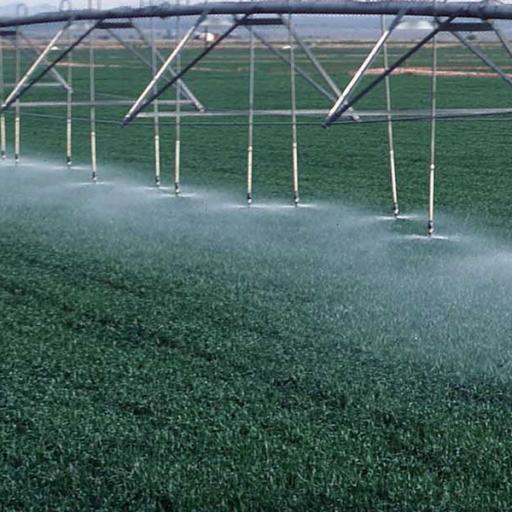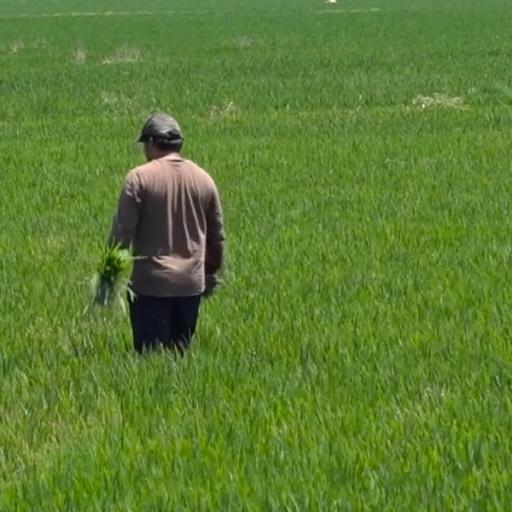The adoption of technological innovations in agriculture has been studied intensively since Griliches (1957) pioneering work on the adoption of hybrid corn in the USA. Excellent surveys of the existing literature are provided by Feder, Just and Zilberman (1985) and by Feder and Umali (1993), while Besley and Case (1993) provide a detailed methodological framework of modeling technological adoption in developing countries. The majority of the existing applied research has been concerned with answering the question what determines whether a particular farmer adopts or rejects an innovation in both a static and a dynamic analytical framework (most recent studies include Dinar, Campbell and Zilberman, 1992; Doss and Morris, 2001; Lapar and Pandey, 1999; amongst others). Another strand of this literature has been concerned with the adoption decision as a dynamic process spanning over time (e.g., de Souza, Young and Burton, 1999; Ghadim and Pannell, 1999, Pietola and Oude Lansink, 2001), or the patterns of new technology diffusion (e.g., Batz, Peters and Janssen, 1999).
However, a relative dearth of empirical research in developing country’s agriculture seems to exist on the perceivable link between the farmer’s decision to adopt innovations and his decision to gather information concerning both the available new technologies and farming practices in general. The role of information is of major importance in technological innovations emphasized by a number of studies (Hiebert, 1974; Linder, 1980; Feder and O’Mara, 1982; Hornik, 1982; Feder and Slade, 1984). Costly and inadequate information services may restrict farmers’ innovativeness. The final decision of an individual farmer to adopt a new technology primarily depends on his/her ability to acquire, process and decode the information related both with farming practices and the technological innovation itself (Rogers and Shoemaker, 1971; Kilhstrom, 1976; Jensen, 1982; Stoneman and David, 1986). Information accumulation improves farmer’s knowledge on farming practices which in turn reduces uncertainty and therefore induces new technology adoption by risk-averse operators.
On the other hand, farmers’ choice to adopt or not a particular innovation, affects his decision to gather technical information from various sources. A farmer who is interested in applying a new technology (e.g., farming practices) has a clear incentive to search for relevant information either through the information network that he/she has established during the years involved in farming or by actively seeking for new information sources. However, as noted by Kihlstrom (1976), producers’ decision for information gathering is more complicated when information is available in increasing degree of reliability at increasing cost. The latter suggests that adoption and information acquisition decisions are correlated and the impact of the determinants of these decisions may differ with the channels of information dissemination (Wozniak, 1993; Gervais, Lambert and Boutin-Dufrense, 2001). It follows that the decisions to adopt (or not) new technologies and acquire relevant information are not separable and therefore, the intimate link between the two decisions should be explicitly introduced, in empirical analysis. Within this analytical framework, the objective of the present study is to model the degree of technology adoption as a process jointly determined with the process via which farmers seek for technical information from various sources.
We apply our empirical model to the case of farmers adopting organic farming practices in Crete, Greece. Organic farming offers an interesting case of an alternative (to conventional farming) new technology. This mode of farming has been actively promoted in the context of the Common Agricultural policy (CAP) of the European Union (EU) during the last decade. The respective EU policies (summarized in EU Regulation 1257/1999) are basically subsidy-driven. Lampkin and Padel (1994) summarizing financial support programmes in various European countries, found that most of these countries adopted a direct subsidy scheme that requires complete conversion of at least a portion of a farm’s land and continued organic production. They concluded that conversion subsidies had increased significantly organic farming sector throughout Europe the last years.
Indeed financial incentives such as direct subsidies, where the central government “shares” in the risk of adoption, are common and effective means for overcoming farmer’s adverse perceptions. These types of incentives are however costly, especially if adoption depends primarily on farmer’s perceptions about future yields. A promising and equally effective way to promote technological adoption in farming sector is the provision of informational incentives that revise producer’s perceptions about the profit (or cost)- effectiveness of new farming practices. Although fixed initial costs are incurred, informational incentives may be less costly than financial incentives in the long-run as information spreads throughout the rural communities. In addition, as Stoneman and David (1986) have shown, although both information and subsidy policies speed up adoption and diffusion of new technologies, subsidy policies may yield welfare losses in the form of income transfers from other sectors of the economy.
Recently, Lohr and Salomonsson (2000) analyzing the EU policies concerning organic farming found that market services and information sources rather than subsidies are more effective in encouraging organic adoption throughout the EU. In addition, other studies (Oude Lansink, Pietola and Backman, 2002; Tzouvelekas, Pantzios and Fotopoulos, 2001a; 2001b) have shown that the application of organic farming methods by EU farmers is in general, inefficient (i.e., they do not explore fully the potential of the given technology). The majority of producers appear rather cautious regarding organic adoption as they do not have the knowledge required; ignore the risks involved; and, more importantly they do not know how to use sources of general farming information which could enlighten them on the prospects of such alternatives. It follows that the farmer’s attitude towards actively seeking (or not) information about his professional activities is of major importance for his organic adoption decision.







